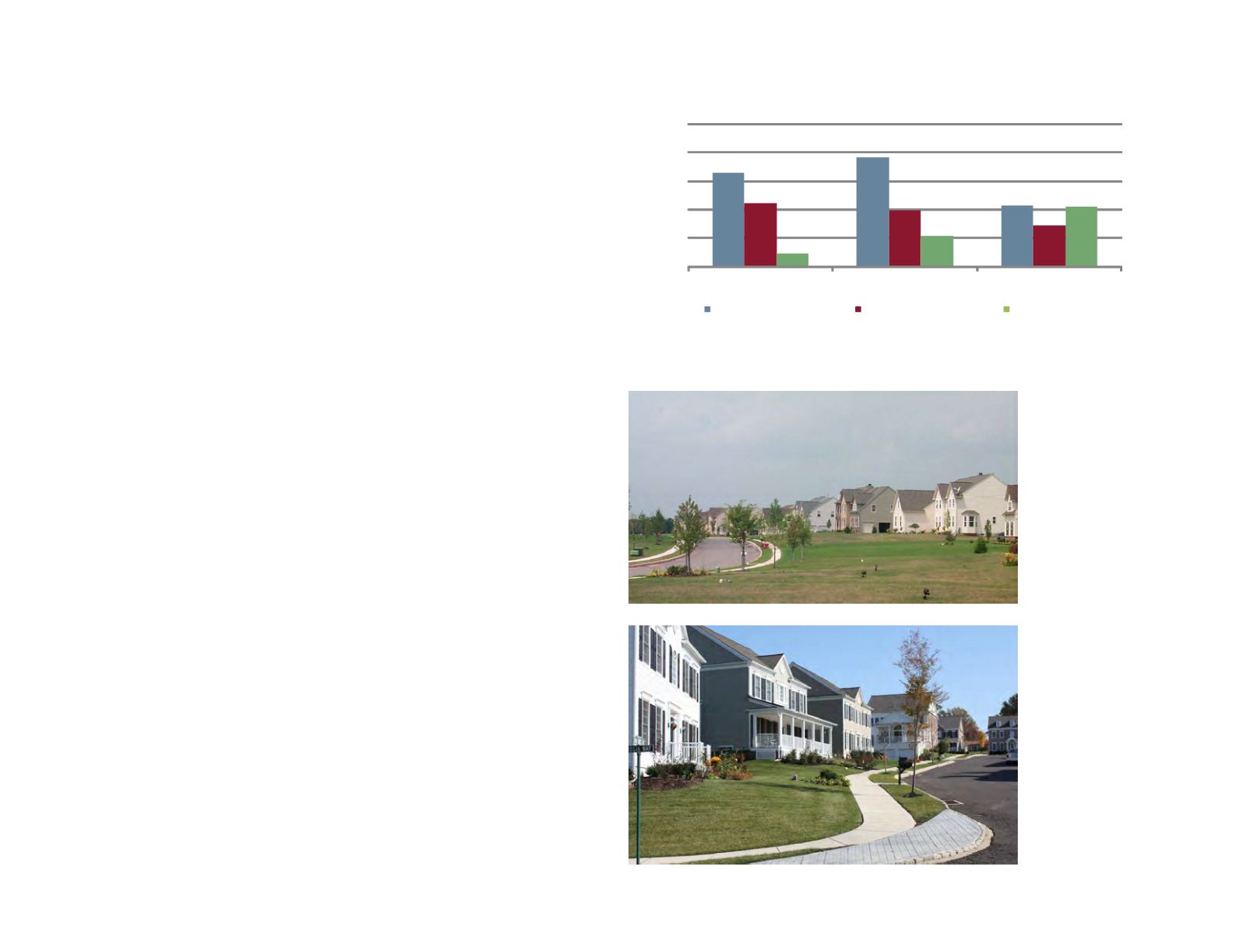
montgomery county today
111
0
5,000
10,000
15,000
20,000
25,000
1980-1990
1990-2000
2000-2010
Single-Family Detached Single-Family Attached Multifamily
FIGURE 75:
Housing Types Added by Decade
Source: U.S. Census Bureau
Housing Types
Like most suburban counties, the dominant housing type in Montgomery County is
the single-family detached house. By 2010, over 54% of all homes were stand-
alone units with only one family or household. That still leaves a lot of room for
other housing types, such as attached units like townhouses, rowhomes, and twins,
or multifamily developments like apartment or condominium buildings.
Historically, these higher-density housing types were most often found in and
around the county’s boroughs. By the 1970s, large-scale townhome developments
and multifamily apartment buildings were expanding into more areas, sometimes
around other dense development, such as a shopping mall, but also along major
arterial roads in lesser developed but growing areas of the county.
Today, multifamily and attached housing construction is still relatively active
despite the overall dip in production. Many of these projects are being built as
redevelopment or infill in areas where the existing infrastructure can support new
growth. Sites along the Schuylkill River waterfront and near transit facilities are
increasingly popular.
Housing Density
The number of homes per acre of residentially developed land is the residential
density. This reveals how much land is consumed by each house and by residential
development as a whole for a neighborhood or municipality. A single-family
detached home built on a one acre lot constitutes a density of one dwelling unit per
acre of land, while at the same time, a 10-unit apartment building built on a one
acre lot constitutes a density of 10 dwelling units per acre of land. In general,
boroughs and older, developed townships closer to Philadelphia have higher
densities than townships located in the central and western parts of the county.
Much of the residential development from the last forty years has been built at a
lower density than the development that preceded it. However, the shift to denser
housing types being built over the last decade has started to reverse that trend.
Residential development consisted of 2.7 units per residentially developed acre in
2010, up from 2.6 units per acre in 2000. Residential land uses as a whole are still
at a much lower density compared to 1970 when the countywide figure was 3.1
units per acre.
Density often first becomes an issue, and one that can become quite controversial,
at the local or neighborhood level. Residents quickly notice increasing densities in
their neighborhood as infill development occurs, farmland develops, or larger lots
subdivide. However, denser development has many benefits when designed
properly, including lower housing costs, cheaper and more efficient infrastructure,
better walkability, more opportunities for public transit, shorter driving distances,
and less open space consumption.
Densities for residential
development vary across
the county, While
detached homes have
generally gotten larger
over time, they do not
have to consume as
much land as the
development in Limerick
pictured above.
The neotraditional
development of
Woodmont in Lower
Moreland (pictured
below) consists of single
-family detached homes
with small lots, plentiful
open space and walking
trails.


